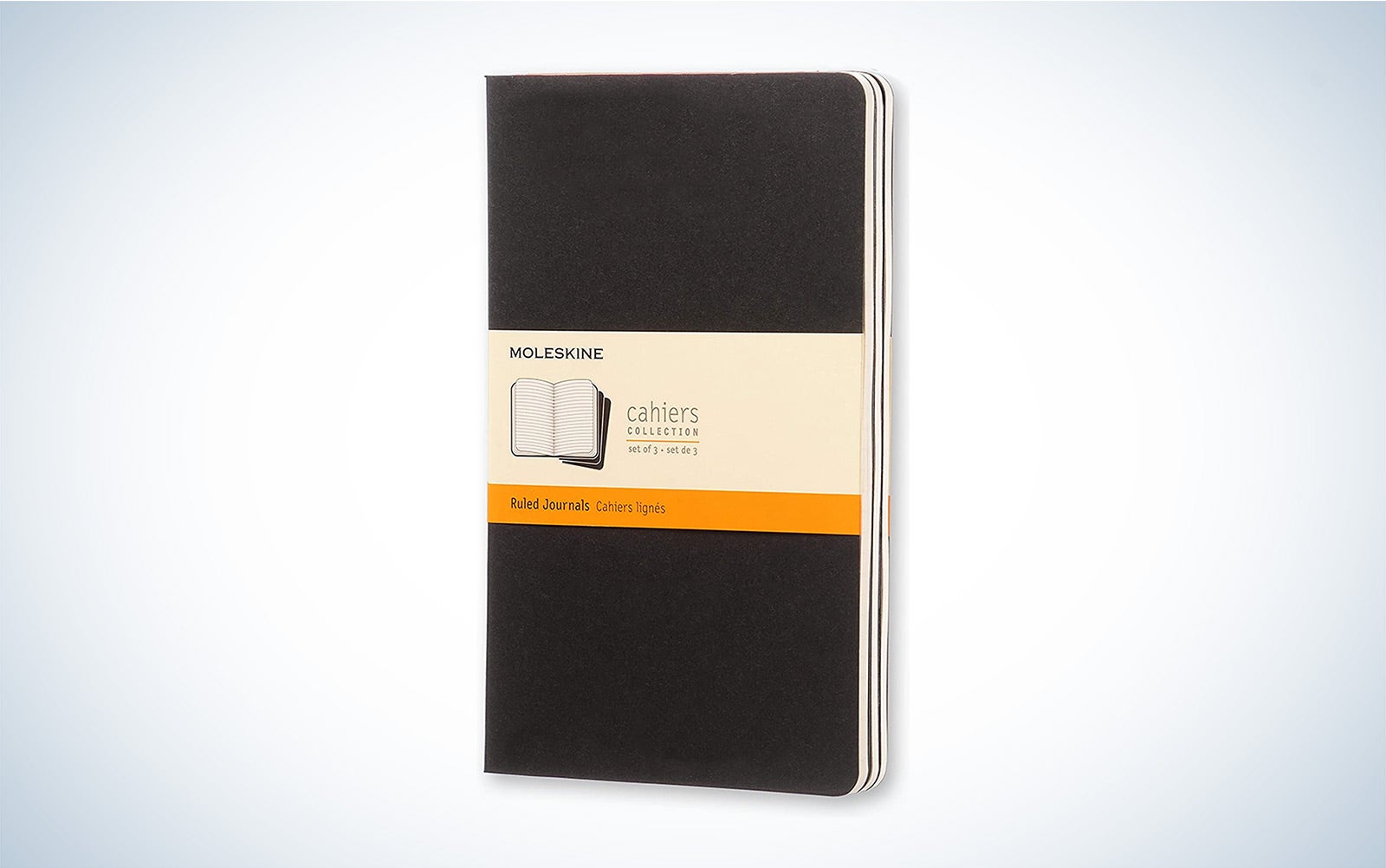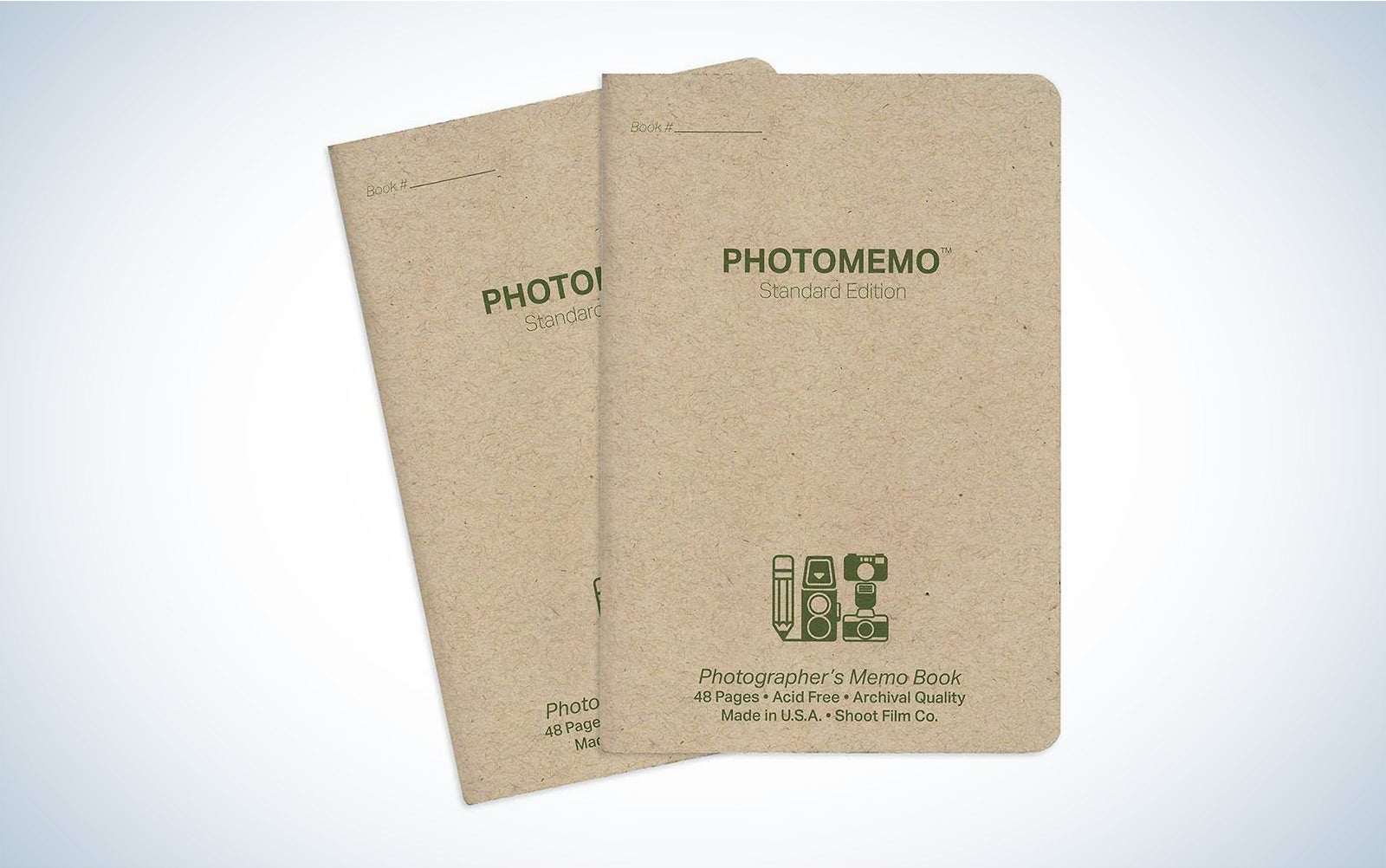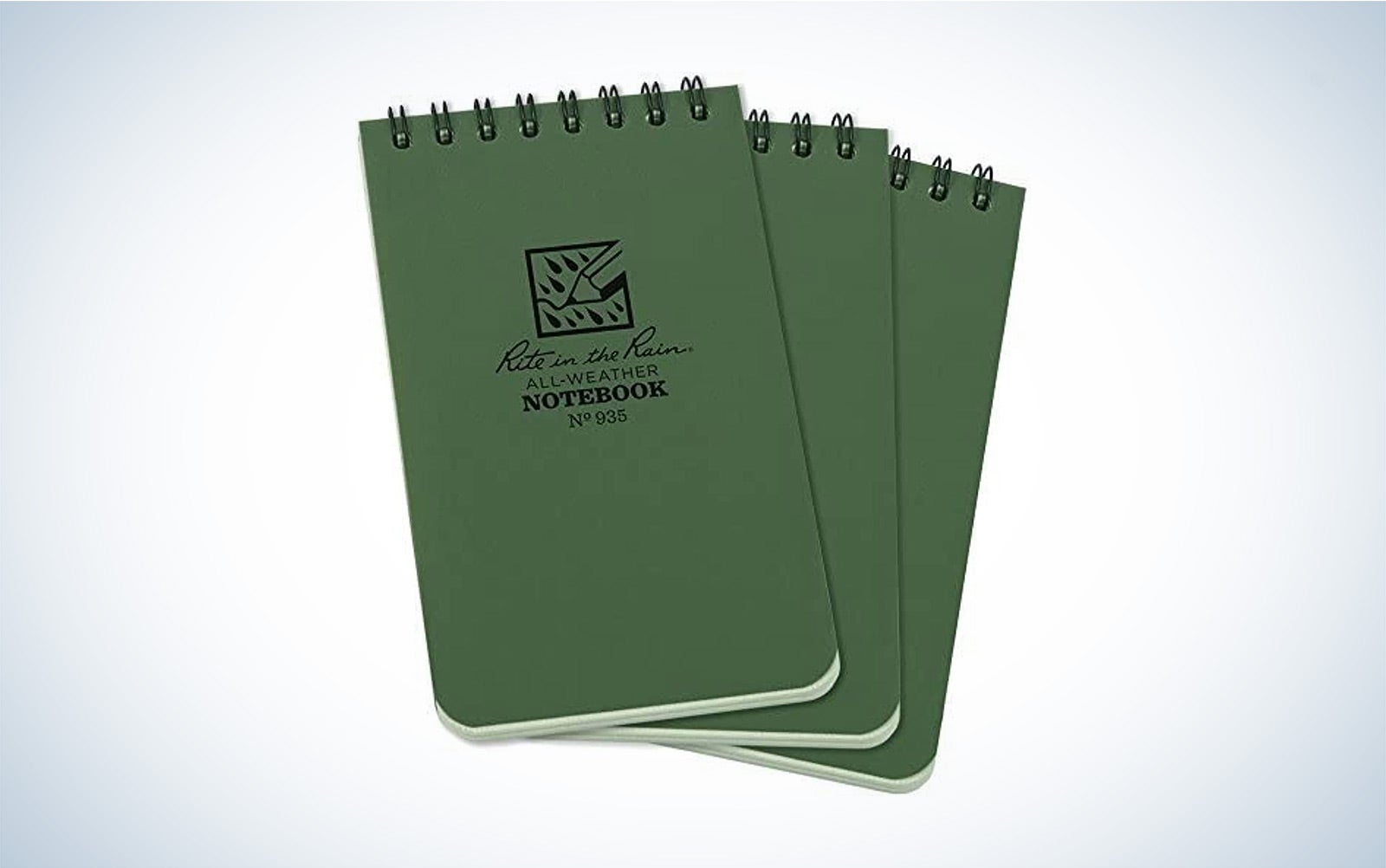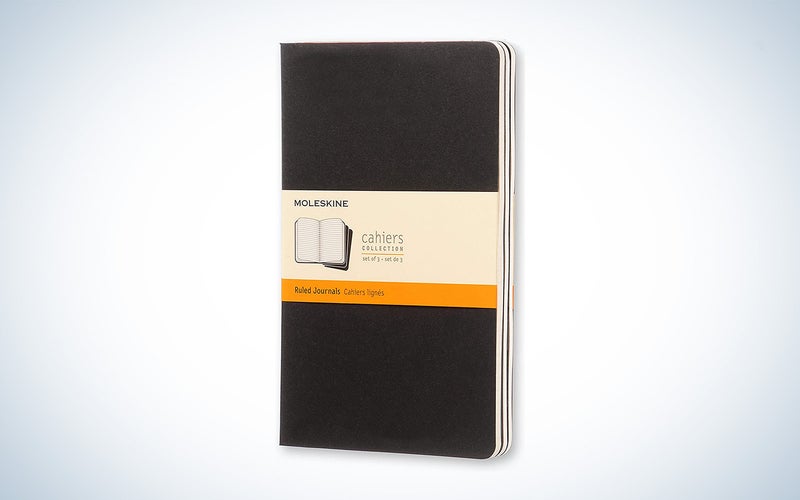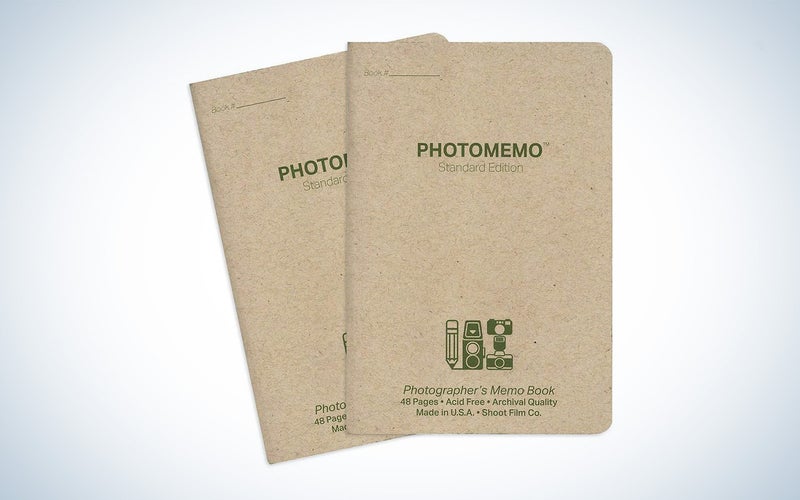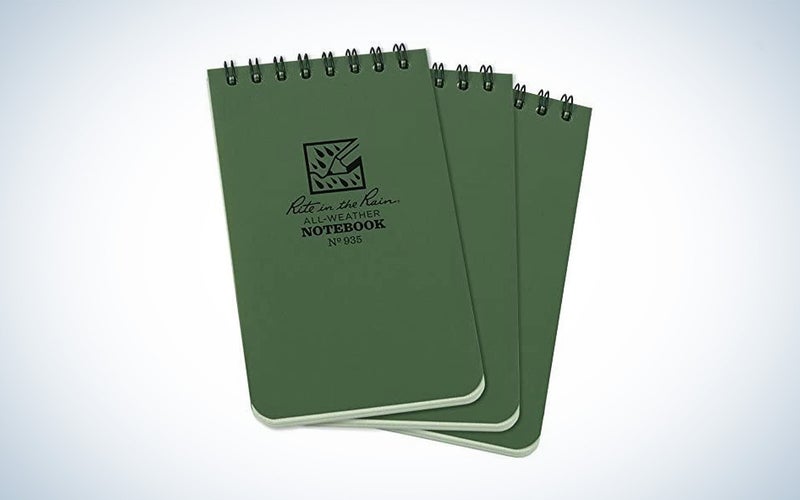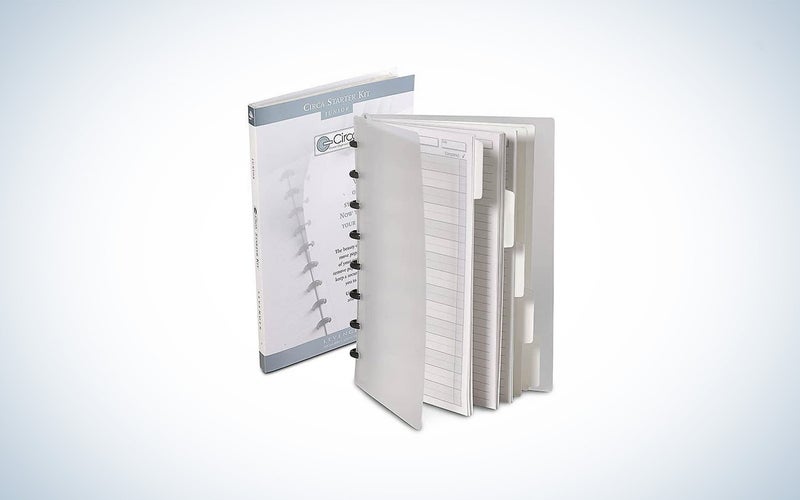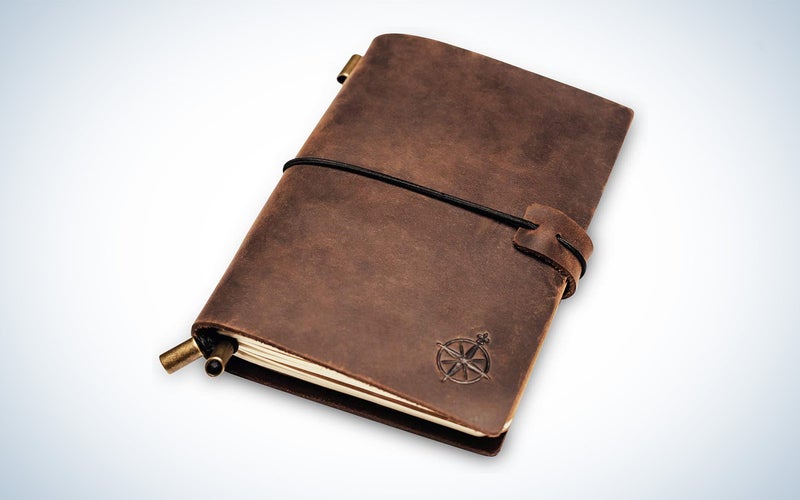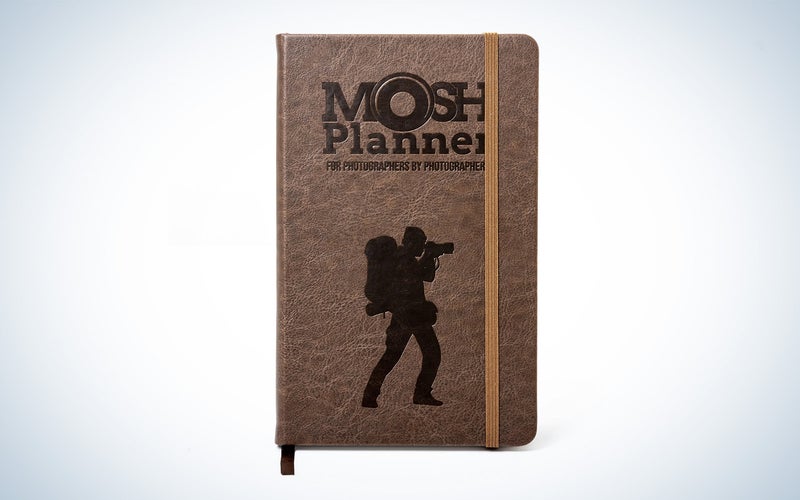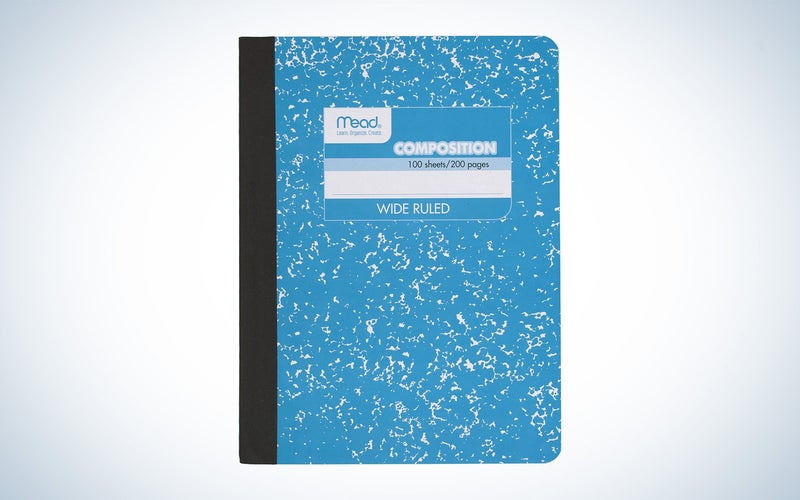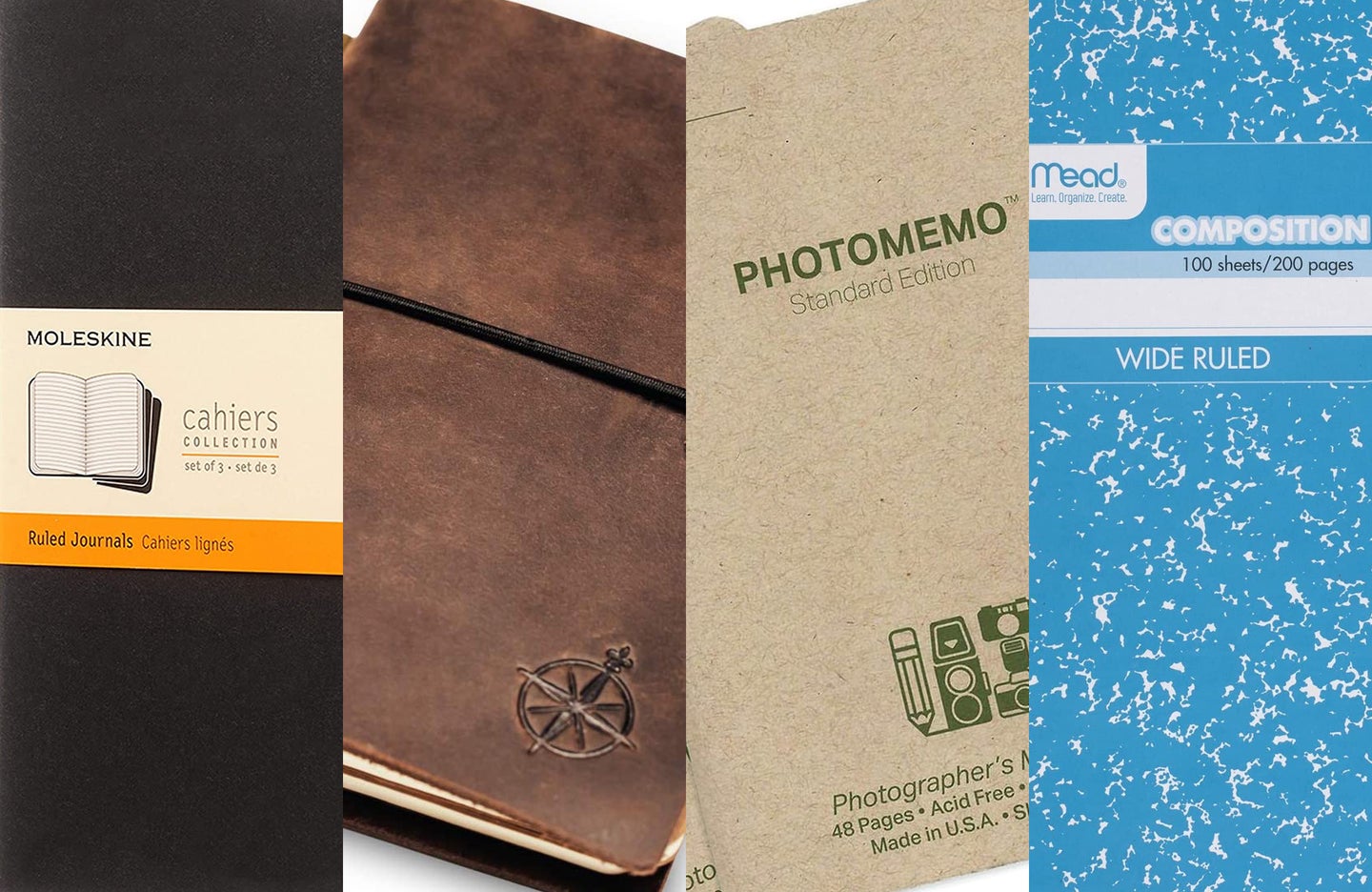
We may earn revenue from the products available on this page and participate in affiliate programs. Learn more ›
You may not consider a notebook an essential part of your photography bag, but you’re missing out. A solid notebook will prove a versatile (and affordable) tool that can have a surprising impact on your photography. They can, of course, help you stay organized, but they can also help you improve your skills. Notebooks can help you keep track of the logistics when planning trips, contain packing lists, or allow you to jot down notes about photo ideas. For years, I kept a notebook dedicated to self-portrait ideas, sketching out specifics as they came to me that I would have otherwise forgotten. They can also help you stay more aware of what you are shooting and how you are doing so. It allows you to look back and reflect on what worked and didn’t, adjusting to be more successful in the future. Though it comes down to personal preferences, the best notebooks will fit your needs, no matter what they are, and help you grow.
- Best overall: Moleskine Cahier Journal
- Best for film photographers: ShootFilmCo PhotoMemo Film Photography Notebook
- Best waterproof: Rite in the Rain Weatherproof Top-Spiral Notebook
- Best refillable: Levenger Circa Starter Kit
- Best for travel: Wanderings Leather Pocket Notebook
- Best for landscape photographers: Mosh Planner
- Best budget: Mead Composition Notebook
Best notebooks: Ratings & reviews
Best overall: Moleskine Cahier Journal
Moleskin
Why it made the cut: These classic notebooks feature quality, acid-free paper, and a pocket in the back. They come in a range of print types, colors, and sizes, and the slim form factor makes it easy to toss in a bag.
Key features:
- Print type: Lined
- Cover: Softcover
- Paper weight: 70 gsm
- Number of pages: 80
- Sheet size: 5 x 8.25 inches
Pros
- Available in ruled, dotted, squared, or plain
- Comes in seven colors
- The last 16 pages are perforated for easy removal
- High-quality, acid-free paper
Cons
- Softcover can get bent
Moleskin notebooks have been around since 1997, but the style of these classic notebooks dates back far beyond that. They are ubiquitous with artists and creatives, and for good reason. The paper within these notebooks is acid-free, meaning it will last longer than alternatives. It comes in ruled, dotted, squared, or plain, so you can choose what fits your style best.
The last 16 pages are perforated, so you can easily tear them out to share. There is a pocket in the back of the notebook for tucking business cards or receipts. Though there are only 80 pages in each, they come in packs of three, so you can stay stocked up. And though a simple thing, the rounded corners prevent them from getting caught, making it easier to slide in and out of pockets.
These feature a cardboard cover that is durable enough to protect the pages some, though it won’t stand up like a hardcover. Moleskin also makes lots of hardcover, additional softcover, and even velvet or leather-covered notebooks. They also make smart notebooks if you want to digitize your notes. I am drawn to the cardboard cover because of how lightweight and slim it is, making it easier to toss in a bag. And I like that I can draw or paint on the cover to make it my own.
Best for film photographers: ShootFilmCo PhotoMemo Film Photography Notebook
ShootFilmCo
Why it made the cut: With fields specifically relevant to keeping track of your rolls of film, this notebook will help you stay organized and improve your film photography.
Key features:
- Print type: Lined
- Cover: Softcover (100 lb. Neenah ENVIRONMENT Desert Storm)
- Paper weight: 60 pounds
- Number of pages: 48 pages, with 23 two-page spreads
- Sheet size: 5.5 x 3.75 inches
Pros
- Slim, lightweight design
- Preformatted with fields specific to film shooting
- Quality, acid-free paper
- Produced by a small, US-based business
Cons
- No ribbon for marking your place
Film shooters can benefit from taking notes even more than digital users for many reasons. I am guilty of occasionally forgetting what roll of film I have in a camera at a given moment, which can change how (or even how much) I shoot. And, no Exif data is stored in your negatives, so it’s easy to forget what camera or lens you used for a particular shot or what the exposure data was. Being able to look back at such information for a given photo can help you assess how to improve to get even better images.
The pages in this notebook come preformatted with fields for information like lens, camera, film, ISO, and start and end dates. It even has space for keeping track of development. Beyond that, there is plenty of room to either write specific exposure information and lighting conditions per shot or general notes that pertain to that particular roll of film.
The cover is made of sturdy 100-pound cardstock, and the pages within are high-quality and acid-free for longevity. The slim design makes it easy to keep with you, meaning you are more likely to actually use it. And it is designed and mailed out by a small, DIY operation, so you’ll be supporting a small business.
Best waterproof: Rite in the Rain Weatherproof Top-Spiral Notebook
Rite in the Rain
Why it made the cut: This durable, waterproof paper will keep your notes intact even in the wettest environments, though it’s still a wood-based paper, making it recyclable.
Key features:
- Print type: Universal (lined with vertical dashes)
- Cover: Waterproof polydura
- Paper weight: 20 pound Rite in the Rain
- Number of pages: 100 (50 sheets)
- Sheet size: 3 x 5 inches
Pros
- Fully waterproof, even if submerged
- Sturdy Wire-O binding
- Pocket-sized for easy carrying
- No special pen required
Cons
- Water-based inks will not work
Photography can take you into some harsh environments, including wet ones. Whether on a boat or in a rainforest, using standard notebooks could mean that your notes get smudged beyond readability. Or worse yet, it could result in fully disintegrated paper if submerged. So, waterproof paper for such situations is vital if you want your notes to survive.
Rite in the Rain developed this waterproof paper in the early 1900s for loggers in the soggy Pacific Northwest. It’s made of real wood pulp, unlike many waterproof papers, so it still feels like and can be recycled like paper. It is secured with a sturdy top spiral to hold the pages together. And it has imperial and metric rulers along with a conversion chart on the cover, making it a great adventure tool.
When pages are dry, you can use a ballpoint pen, permanent marker, or pencil to write. If wet, you will need to use a pencil, crayon, or Rite in the Rain’s waterproof pen. Once written on, even if the notebook is submerged or goes through the washing machine, your notes will still be in perfect shape. You can simply wipe off water, mud, and grease, keeping everything readable no matter the situation.
Best refillable: Levenger Circa Starter Kit
Levenger
Why it made the cut: This disc-bound system is highly customizable and infinitely refillable with a variety of page types and sizes.
Key features:
- Print type: Lined
- Cover: Translucent softcover
- Paper weight: 90 gsm
- Number of pages: 10 sheets of annotation-ruled paper, 10 sheets of full-page ruled paper, 5 sheets of Things To Do
- Sheet size: 9 x 6.5 x 0.75 inches
Pros
- Lots of sheet styles available
- Endlessly refillable
- Very customizable
- Thick paper that takes ink well
Cons
- Refills are a bit pricey
- Disc design means it isn’t as slim as others
Disc-based notebooks are similar to three-ring binders but don’t have the bulky cover and are more customizable. Levenger’s disc notebook starter kit is a great way to try out the system without fully investing. It comes with translucent front and back covers, 3/4-inch discs, and three different styles of paper.
Should you need more paper or want different preformatted styles or sizes, there are plenty to choose from. They are a bit pricey compared to basic refills or other notebooks, but it does allow you to build out exactly what you need. And, the disc-style means it will all fit together. No more worrying if you got the correct hole pattern.
The paper included is nice and heavy, so it won’t rip even if you frequently move it off the discs. The translucent covers will provide some stability, but many other options are available if you want a different look. And there are even different colors of discs should you want to customize every inch of this notebook.
Best for travel: Wanderings Leather Pocket Notebook
Wanderings
Why it made the cut: This attractive leather notebook is refillable and features a durable leather cover that should last a lifetime. Plus, the passport size makes it easy to keep on you.
Key features:
- Print type: Blank
- Cover: Hardcover, leather
- Paper weight: 80 gsm
- Number of pages: 3 inserts with 30 sheets each, 180 pages total
- Sheet size: 3.93 x 7.48 inches
Pros
- Attractive handcrafted leather design
- Refillable
- Available in three sizes
- Durable strap to keep it closed
Cons
- Uses multiple booklets instead of one continuous book
Leather notebooks are a classic pick for travelers, thanks to their durability and the attractive way the material ages. This particular leather notebook comes with three inserts, each with 30 sheets of acid-free 80 gsm paper. It is refillable, meaning the leather cover can keep traveling with you, becoming a memorable part of your journeys.
At just 3.93 x 7.48 inches, it is a small notebook. That makes it easy to keep in your pocket or your camera bag. But, should you want more room to write or sketch, it comes in 11×7.5 or 8.5×6-inch sizes. The pages included are blank, freeing you up for drawings along with notes, but lined, dotted, or mixed paper is also available.
Best for landscape photographers: Mosh Planner
Mosh Planner
Why it made the cut: This notebook not only helps you dream up and plan shoots, but helps you keep track of your gear and jot down memories.
Key features:
- Print type:
- Cover: Hardcover, faux leather
- Paper weight: 80 gsm
- Number of pages: 250
- Sheet size: 5 x 8 inches
Pros
- Lots of preformatted pages to cover every aspect of photography
- Attractive faux leather design
- Includes a PDF version for digital notes
- Ribbon bookmark and elastic band for keeping the journal closed
Cons
- Pricey
A photographer designed the Mosh Planner with very specific photographer needs in mind. It has a whole slew of preformatted pages for everything from gear serial numbers and contacts to location scouting templates, adventure calendars, and lined papers for jotting memories. It has the entire spectrum of the photographic process covered from start to finish.
The trip planner pages give you everything you need to scheme up your adventures, including packing list space and the ability to note moon phases. And, should you be new to traveling as a photographer, the notebook even contains suggested packing lists for different types of locations.
The notebook features an attractive faux leather hardcover and has an elastic band to keep it closed. It’s small enough to fit in your camera bag, but the downside is that it only has space for eight trips. Of course, with the variety of pages included, it would have to be quite thick to include room for more trips, so it’s a trade-off. It isn’t a cheap notebook by any means, but if you want more of a guided approach to photography journaling, this is a great way to start.
Best budget: Mead Composition Notebook
Mead
Why it made the cut: Mead Composition Notebooks are a classic choice for a basic notebook.
Key features:
- Print type: Legal
- Cover: Softcover
- Paper weight: Not provided
- Number of pages: 100 sheets
- Sheet size: 9 ¾ x 7 ½ inches
Pros
- Very affordable
- Comes in four different colors
- Classic design
Cons
- Paper quality isn’t great
If you aren’t looking for anything fancy and just want a basic notebook, you can’t go wrong with a classic Mead Composition Notebook. It has 100 double-sided sheets of lined paper and is still nice and slim. The wide rule is ideal for taking notes in a hurry, providing plenty of space to jot around.
The sewn binding is durable and will stand up to getting thrown in camera bags and opened frequently. And it lays flat, making it easier to write when at a table. It comes in four colors with a classic marble design. The paper isn’t the highest quality and will bleed through with things like markers, but you can’t go wrong for the price.
Things to consider before buying notebooks
Though notebooks are simple things, there are a surprising number of factors in finding the best notebook, especially if you are picky like me. Of course, you can buy the cheapest one, and it may suit your needs just fine. But sometimes, you may need to be more specific.
Size
The size of your notebook matters for a few reasons. First, if you are going to use it to take notes while shooting–which we recommend–it needs to be small enough to take with you easily. Too large of a notebook will be cumbersome to carry around, and you will likely find yourself leaving it behind as a result.
On the other hand, if a notebook is too small, you may not have enough room to take the notes you want without using multiple pages per outing. That may be fine for some, but it is a factor to consider.
Print type
Print type refers to what pattern comes preprinted on the paper if anything. There are four main options for print type: lined (also called ruled), dotted, gridded, and blank. The right print type depends on what you are using the notebook for and your personal preference.
Lined is probably best if you are primarily writing, though some prefer gridded format. But, if you like to sketch or draw or take notes in more than linear ways, blank or dotted paper will be ideal.
Paper weight
The thickness of a paper, or paper weight, is measured in grams per square meter, or pounds here in the US. Paper thickness will, in part, determine if your ink will be visible on the other side of the page or what is called ghosting. Too thin of a paper with wet ink can also result in the writing material going through to the next sheet, called bleeding.
Most of the notebooks here are over 60 gsm, and we would suggest not going lower than that for a notebook. Of course, it also depends on your writing device, as a pencil will not bleed through paper like a fountain pen. If you know you’ll be using a wet ink, get a notebook with heavier paper.
Paper texture
Though paper weight impacts how the surface accepts ink, paper texture may be even more important. You’ll often see the word “tooth” or “toothy” in reference to paper texture. A paper with more tooth is more heavily textured and feels rough. Conversely, less tooth means that the paper is smooth.
Some materials, such as pencil and charcoal, are ideal for paper with more tooth, but it is also a matter of preference. I very much prefer smooth paper, so I typically gravitate towards those. Finding which you like best will likely take some trial and error, especially when paired with your favorite writing utensil.
Cover material and binding style
You are likely familiar with the fact that there are two types of book covers: hard and soft. Hardcover notebooks will, of course, provide more protection for the pages within, but with that comes added weight and bulk. On the other hand, soft cover notebooks will be slimmer and easier to slide into pockets or laptop sleeves, which is why many prefer that style for photography notebooks. But, as with the other features mentioned above, it’s simply a matter of personal preference and how durable you want your notebook.
Binding style refers to how all of the pages are held together. Sewn, glued, and spiral are the three most common styles. As the name implies, sewn binding involves sewing the pages together in sections. These notebooks lay flat when opened, which most people prefer when writing a lot. When adhesive is used to glue the sheets and cover together, that is called glued binding. You’ll typically see this style with hardcover notebooks. And finally, spiral binding involves paper with pre-punched holes bound together with wires. Most school notebooks utilize this style of binding.
FAQs
Q: What can I use a spiral notebook for?
You can use a spiral notebook for whatever you like. While you’ll typically find spiral-bound notebooks in school settings, you can truly use them for anything. Some may not like the wire binding, however, as it can catch on things like zippers or loose threads in backpacks. But it is simply a matter of personal preference.
Q: What is the most common journal size?
A5–or 5 ¾ x 8 ¼ inches–is the most common journal size. That size is small enough to throw in a bag to have with you but large enough that you can fit a good amount on each page. You won’t need to fill multiple pages to take the most basic notes as you would with a tiny notebook.
Q: Is notebook paperweight important?
The weight of paper in a notebook is important, mostly to avoid ghosting or bleeding. It largely depends on your writing utensil, but even pencil can show through on extremely thin paper. For note-taking purposes, look for a paper that is at least 60 gsm. That will enable you to use both sides of the page with most types of writing tools. But, if you like flowy inks like in fountain pens, go with something 90 gsm or higher to prevent bleeding.
Q: Are there any notebooks for lefties?
While lefties can use any notebook, some spiral-bound notebooks are specifically designed for left-handed writers. These notebooks have the binding on the right sides instead of the right.
Beyond that, there are no notebooks specifically intended for left-handed folks. Instead, you’ll want to focus on notebooks that lay flat when opened, as it will make writing much easier. Notebooks that utilize stitched binding will be your best bet.
Final thoughts on the best notebooks
Using a notebook to jot down shot information and notes specific to a shoot is a very easy–and affordable–way to improve your photography. No fancy tools or methods are required, simply a notebook and writing tool. It’s also a great way to keep track of image or project ideas and reflect back on your work, which is helpful and rewarding.
Methodology: How we picked the best notebooks
Taking notes while shooting was instilled in me as far back as my first college photography class over a decade ago. My professor taught us to use it as a way to keep track of camera settings (it was a film class) and to remember what was on a given roll of film before development. Since then, I have regularly used journaling to reflect on projects and assess what is working and what I want to improve on.
I am rather picky about the paper I write on and have used my fair share of notebooks over the years. When compiling this list of best notebooks, I prioritized different types of notebooks that would fit a range of needs and journaling styles. I also considered paper type and feel, offering a range of options to suit various preferences. Just like what we say with camera gear, the best notebook is the one you have with you, so I primarily chose smaller sizes that would be easier to carry around in a bag.
The post Best notebooks in 2022 appeared first on Popular Photography.
